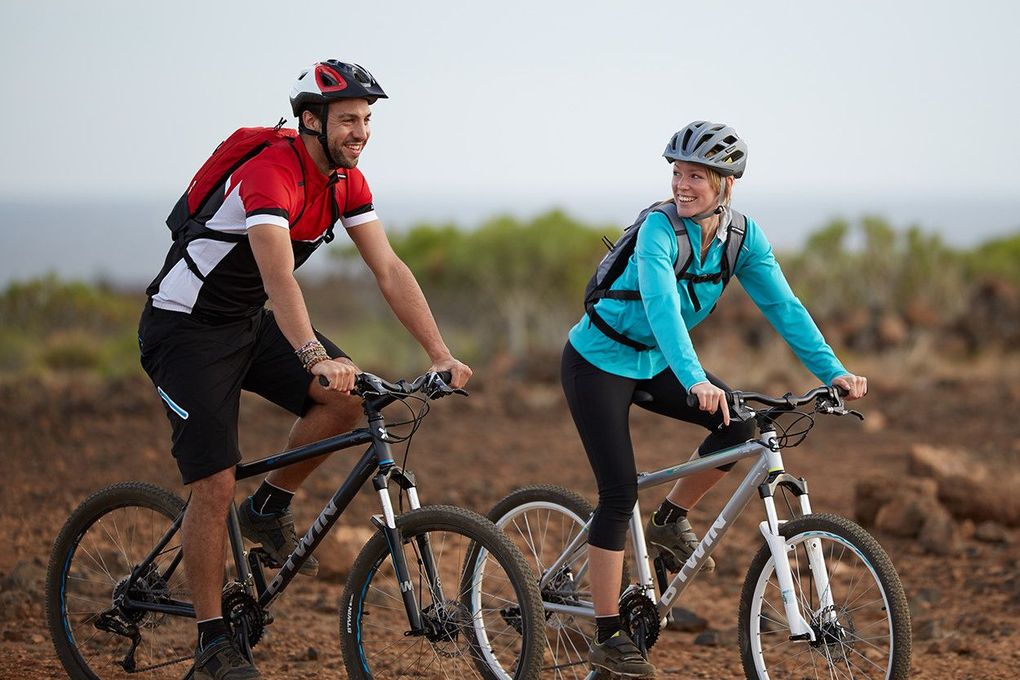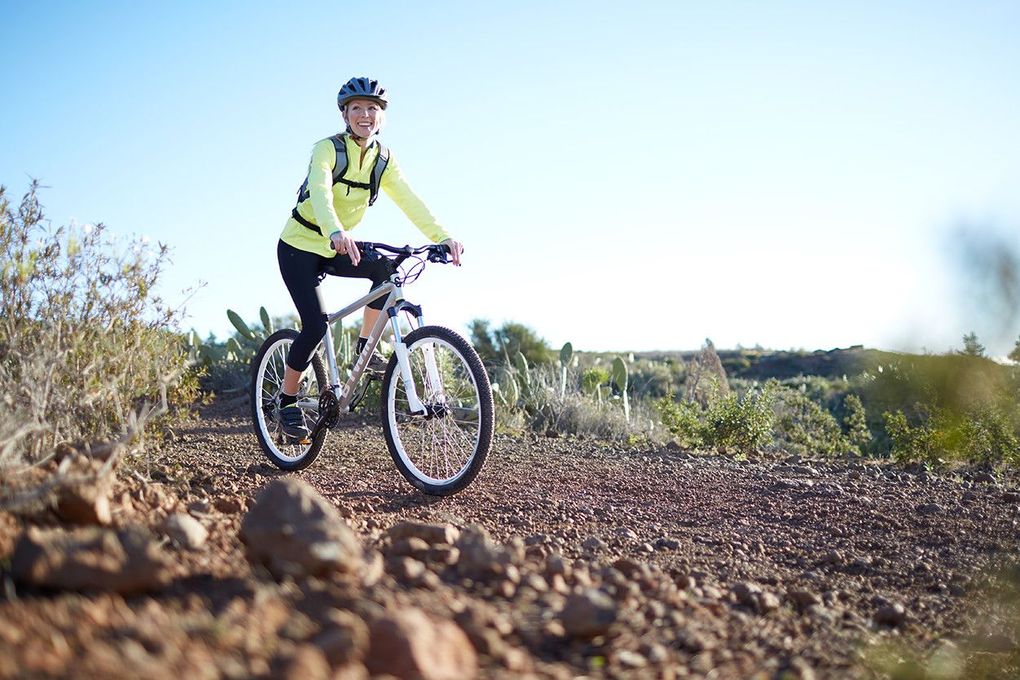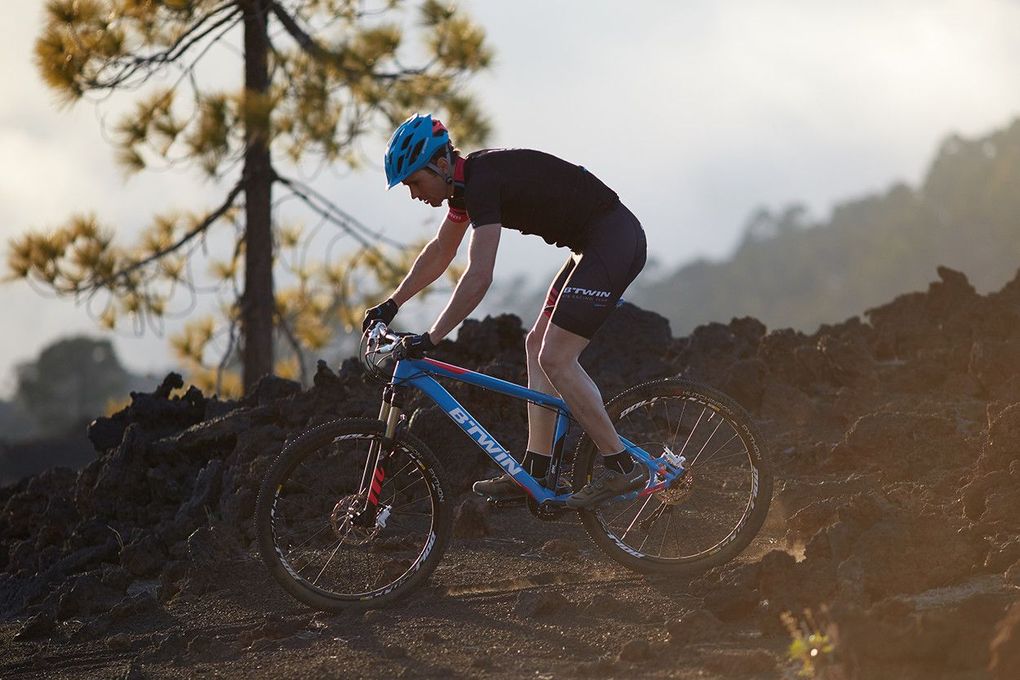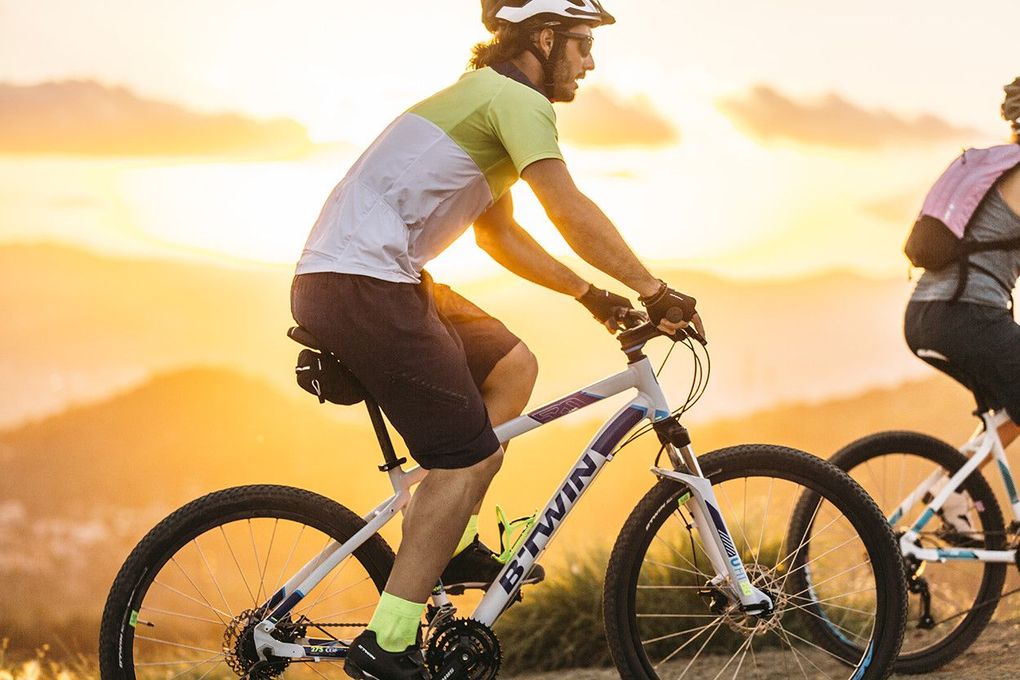Riding shorts: Again, avoid lycra here. Trail riding shorts tend to be looser and baggier while maintaining the breathability and padding inside to keep things comfortable. You can also get trail riding trousers which fulfil the same requirements.
Body armour: Body armour comes in various shapes and sizes, from the full on “stormtrooper” set up of shin pads, knee pads and full upper body protection to lighter, more discreet upper body armour and simple knee and elbow pads.
The heavy duty armour is more for downhill, while anything less is commonly seen on the trails, particularly some form of light elbow and knee protection. We should also note that it’s a bit of a cultural taboo to wear body armour on top of your riding clothes in mountain biking, so avoid if possible!
Gloves: Even more essential for maintaining grip and avoiding injury than they are for cross-country!
Socks: Again, above ankle and tight fitting is ideal.

Shoes: While clipless is preferred by a lot of trail riders, there are still many including top professionals who swear by flat pedals. If you’re just getting started in trail riding, we’d recommend flats as they teach you more lessons and give you more chance of escaping injury!
Thermals: Standard, breathable, marino wool base layers will work well here for ensuring you stay at the right temperature while remaining comfy, and removable leg and arm warmers are also good.
Breathable jacket: Say it with us: lightweight, waterproof, wind resistant, breathable! Check, check, check, check. This is an essential for the wet and windy trails!
For both cross country and trail riding, you should also bring a suitable, lightweight mountain bike rucksack or hydration pack with you that’s well fitted, and stack it with a spare inner tube and a multi-tool so you’re always prepared.
This will give you room to carry those base layers and jackets should they be needed, give you somewhere to store the dirty gear after your ride and even provide you with some back protection should you take a tumble on the trails.
You May Also Like
How to Buy Your First Mountain Bike
How to Clean Your Mountain Bike Properly
Why Wheel Size on Your Mountain Bike Actually Matters







